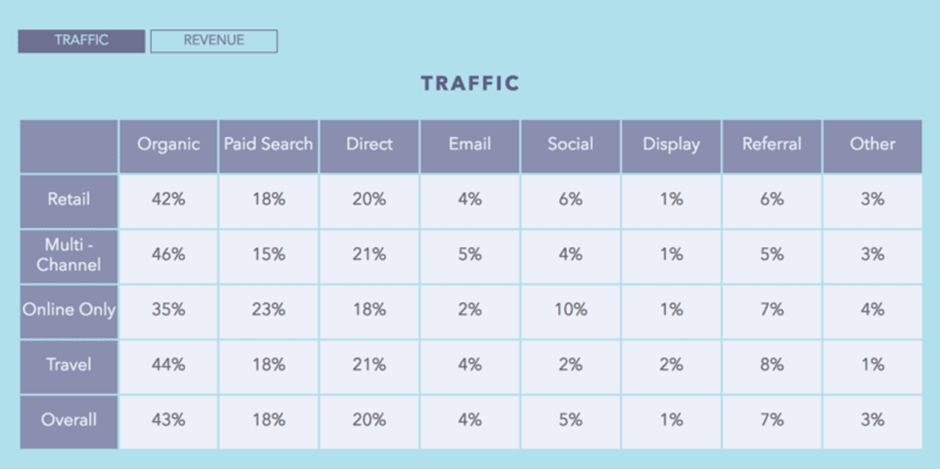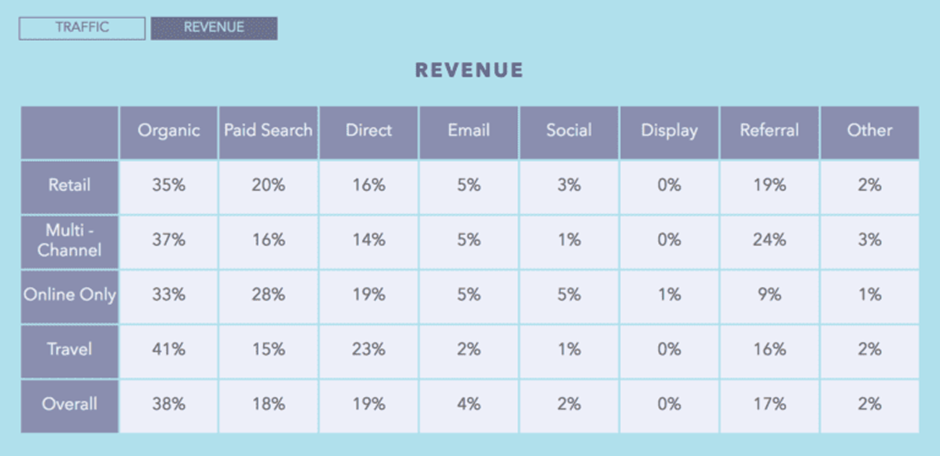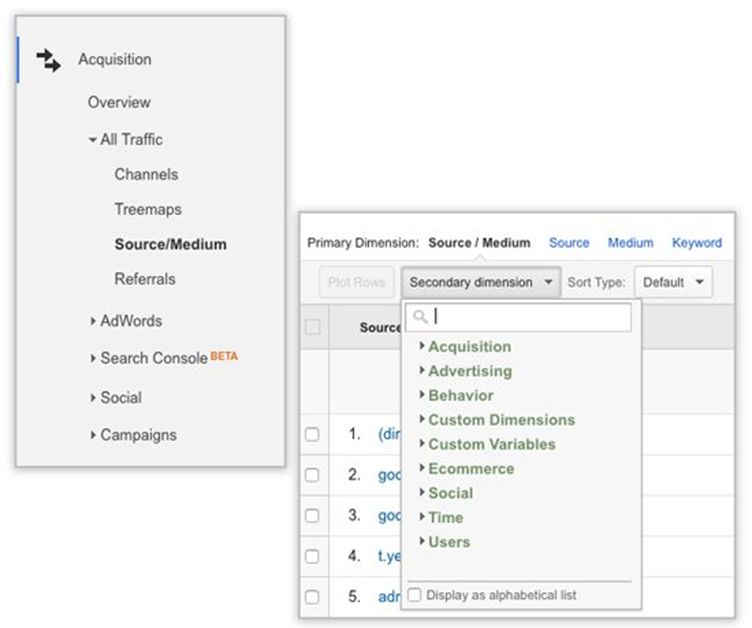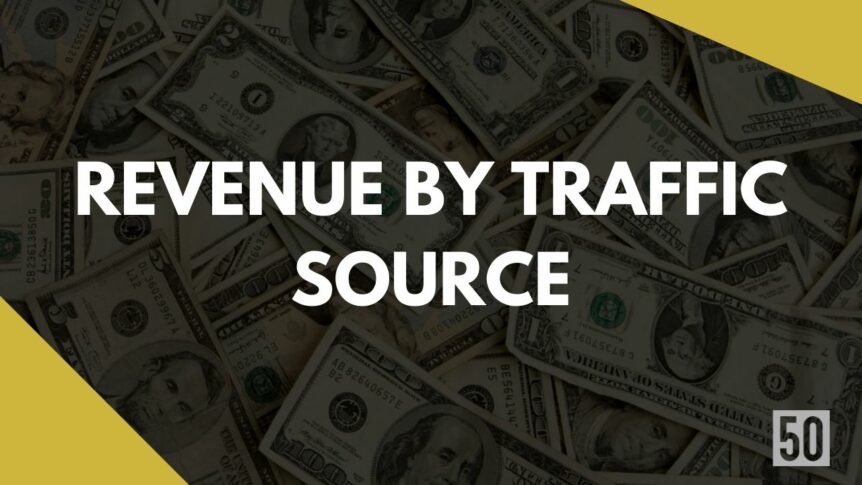Which traffic sources are sending the most visitors to your website? And more importantly, which of those visitors are turning into customers? To answer these questions and improve your marketing strategy, you must understand how traffic sources generate revenue. In this comprehensive guide, we’ll break down everything you need to know about traffic sources and revenue. Plus, we’ll provide case studies and tips for improving your results. So whether you’re just starting or looking for ways to optimize your current marketing plan, read on for all the information you need!
What Is Revenue By Traffic Source?
Revenue By Traffic Source is the breakdown of the total generated revenue by marketing channel. Website traffic can come from various sources, including search engines, social media, referrals, and direct visits. While each of these channels can provide valuable insights into your audience, they also represent different opportunities for generating revenue.
For example, direct visits are essential for sales if you sell a product or service online. However, if you’re relying on advertising to generate revenue, traffic from search engines is typically more valuable since it represents users actively seeking out your content. Therefore, it’s important to understand the source of your website traffic to maximize revenue.
Why Is Revenue By Traffic Source Important For Businesses?
“The data on the growing and shrinking traffic sources is very interesting because it not only helps us identify new trends in consumer behavior but also helps us identify where marketing dollars should be spent.” – Justin Butlion, Content and Social Marketing Manager of Yotpo.
A business’ revenue is the money that it earns from its activities. Revenue by traffic source is important for companies because it provides insights into where their website visitors are coming from and how much money they spend on average.
This information can help businesses to adjust their marketing and advertising strategies accordingly. For example, if a company sees that its website receives a lot of traffic from social media sites, it might focus more on creating social media ads.
Alternatively, if a business sees that its website receives a lot of traffic from search engines, it might focus more on optimizing its site for search engine ranking. Ultimately, understanding revenue by traffic source can help businesses make more informed decisions about allocating their resources.
How To Calculate Revenue By Traffic Source?
When it comes to calculating the revenue by traffic source, here are the most effective steps to complete the process:
- Select an analytics tool such as Google Analytics
- Install or Use the software’s tracking code.
- Now, the software aims to track website sessions.
- Calculate or Monitor change over time.
- Dive deeper into your traffic sources.
Specifically, you can:
- Identify the traffic source that generated the most revenue.
- Calculate the total revenue generated from that traffic source.
- Divide the total revenue by the number of visitors to get the average revenue per visitor.
What Is A Good Revenue By Traffic Source?
Revenue per visitor can vary widely depending on the traffic source. Paid traffic, such as PPC or display advertising, is generally the most expensive, while organic traffic is typically the least expensive. However, several factors can influence the cost of each type of traffic.
For example, the cost of paid traffic depends on the bid price and the quality of the leads. Organic traffic costs depend on the SEO efforts required to rank for the target keywords. Generally, a good revenue per visitor covers the acquisition cost and leaves a healthy margin for profit.
Examples Of A Good Revenue By Traffic Source
Some popular examples of good revenue by traffic source are organic search, email marketing, and paid search. Organic search is great because it’s free traffic, email marketing is great because it’s highly targeted, and paid search is great because it can be very profitable.
Wolfgang Digital has just released its E-commerce 2019 KPI report, which analyzed data from 250 million website sessions and over €500M in online revenue for the 12 months up until June 2018. In it, they detail how paid search marketing is essential to have alongside organic listings due to 50% more visits than social media or email campaigns do on average when it comes to retail visits. However, social media campaigns made a higher in online-only retailers.

Moreover, organic and paid search are essential for retail sales but referrals from several sites, such as affiliate marketing, are lower.

Tools to Track Traffic Sources
In order to track Revenue by Traffic Source, you’ll need to use an analytics tool such as Google Analytics and set up ecommerce tracking. Once each transaction is being tracked, you can breakdown your revenue by sources that direct traffic to your site.
Once you generate traffic, other tools can help you understand these users.
Crazy Egg
This tool provides you with a heatmap of your website so you can see what areas are being clicked on the most.
Mixpanel
This tool helps you track user engagement and see how people are using your website or app track user engagement and see how people use
SumoMe
This tool provides a suite of tools to help you grow your website’s traffic, including email capture forms and social sharing buttons.
Hotjar
This tool allows you to see how people are using your website, including where they’re clicking and how long they’re staying on each page.
How to Measure Revenue by Medium in Google Analytics?
Click on the Acquisition tab in Google Analytics. This page shows you traffic from each channel and revenue generated by medium and source, which can help us analyze the performance of our campaigns more closely! Once there, click the Secondary Dimensions filter to dive further into a campaign level or keyword content aspect.

Wrap Up
So, there you have it. You must know everything about measuring and analyzing your website traffic by source. By understanding where your visitors are coming from, you can focus your marketing efforts on the most effective channels for bringing in new customers.

